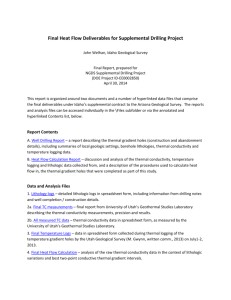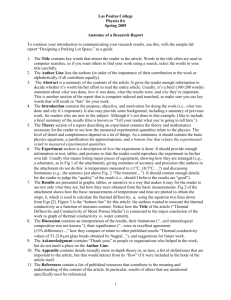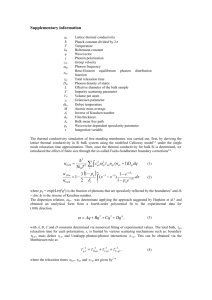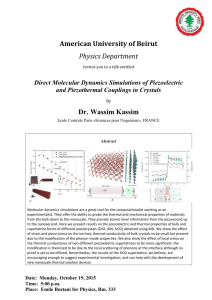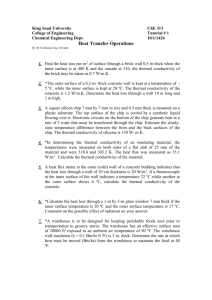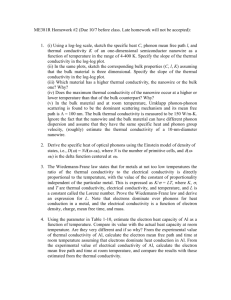Supplementary Information Strain-controlled thermal conductivity in
advertisement
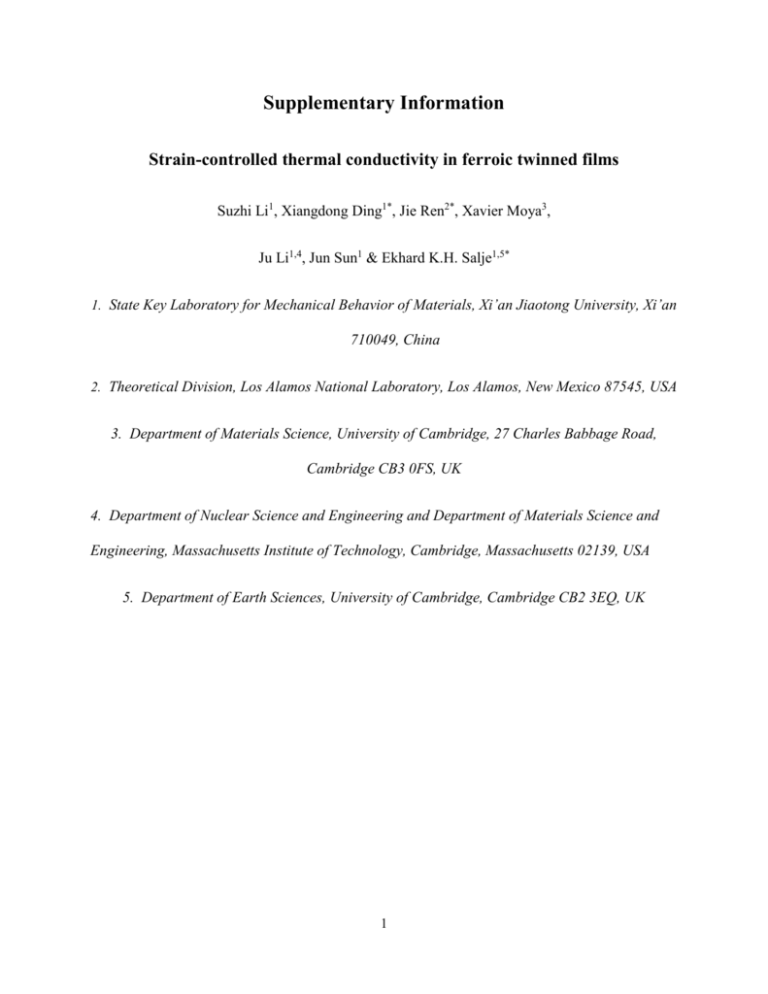
Supplementary Information Strain-controlled thermal conductivity in ferroic twinned films Suzhi Li1, Xiangdong Ding1*, Jie Ren2*, Xavier Moya3, Ju Li1,4, Jun Sun1 & Ekhard K.H. Salje1,5* 1. State Key Laboratory for Mechanical Behavior of Materials, Xi’an Jiaotong University, Xi’an 710049, China 2. Theoretical Division, Los Alamos National Laboratory, Los Alamos, New Mexico 87545, USA 3. Department of Materials Science, University of Cambridge, 27 Charles Babbage Road, Cambridge CB3 0FS, UK 4. Department of Nuclear Science and Engineering and Department of Materials Science and Engineering, Massachusetts Institute of Technology, Cambridge, Massachusetts 02139, USA 5. Department of Earth Sciences, University of Cambridge, Cambridge CB2 3EQ, UK 1 1. Calculation of thermal conductivity by non-equilibrium molecular dynamics (NEMD) simulation We used NEMD method to calculate thermal conductivity1. The whole system is divided into 40 slabs along x direction (Fig. S1a). The middle and the end slabs are taken as heat sources and heat sinks, separately. The heat flux is generated by exchanging kinetic energy between heat source and sinks in a given time frequency until heat flow reaches steady state. Owing to periodic boundary conditions used in x direction, the heat flux induces two temperature gradients on both sides. Usually, the temperature profile shows non-linearity behavior in the slabs near the source and sinks, but behaves linearly in slabs far away from the source and sinks, as shown in Fig. S1b. The thermal conductivity along x direction is calculated in the linear regime as κ = −Jx/(∂T/∂x) according to Fourier law, where heat flux Jx (=ΔEK/tA) is the amount of energy exchange (ΔEK) in a given time (t) through the cross-sectional area (A) and T is temperature. Since the two-dimensional simulations are performed here, the magnitude of cross-sectional area A equals to the box length in y direction by setting the length along z direction as one. 2. Slight effect of temperature gradient on the stability of twin patterns For calculating thermal conductivity in NEMD method, a temperature gradient is induced on the system. The range is dependent on the frequency of the kinetic exchange between the heat source and sinks. In our simulation, the dynamics loading is performed at T ≈ 0.2Tm, where Tm is melting point. After applying heat transfer, the induced temperature gradient will range from 0.28Tm to 0.13Tm. Such temperature gradient will not cause thermal evolution of twinning 2 morphologies, as shown by the two atomic configurations before and after applying heat flow in Fig. S2. The temperature range is dependent on the frequency of heat exchange1. 3. Calculation of bulk thermal conductivity In order to manifest the scattering effect of domain boundary on heat transport, we calculate the thermal conductivity of bulk materials in comparison to that in the twinned system. We set up a perfect 2D crystal structure with periodic boundary conditions (PBC) in both two dimensions, as shown in Fig. S3a. The length along x axis (Lx) and width along y axis (Ly) is in size of 160a and 100a, respectively, where a is lattice constant. The thermal conductivity along x direction (0) is calculated by using NEMD technique as manifested in manuscript. In order to avoid influence of PBC to phonons movement, we enlarge the length to do the converging calculations. We can see that the value of 0 is length dependent and goes to a converged value, as shown in Fig. S3b. We fit the data in a simple exponent form and the curve converges to 1488 r.u., which is taken as the bulk thermal conductivity (bulk). 3 Figure S1. Details for the non-equilibrium molecular dynamic (NEMD) simulations. (a) Atomic image of a calculation sample. (b) Temperature profile along x direction. Red line indicates the nominally linear temperature profile for slabs far away from the source and sinks. Atoms are colored according to values of their centro-symmetry parameters2. 4 Figure S2. Impact of temperature gradient on twin morphology. Twin morphology (a) without temperature gradient, (b) with temperature gradient. Atoms are colored according to values of their centro-symmetry parameters2. 5 Figure S3. Calculation of bulk thermal conductivity (bulk). (a) Simulation model. (b) Dependence of 0 with length of simulation box. 6 References for Supplementary Information 1 MullerPlathe, F. A simple nonequilibrium molecular dynamics method for calculating the thermal conductivity. J. Chem. Phys. 106, 6082-6085, (1997). 2 Kelchner, C. L., Plimpton, S. J. & Hamilton, J. C. Dislocation nucleation and defect structure during surface indentation. Phys. Rev. B 58, 11085-11088, (1998). 7



